How We Trekked the Baghini Glacier
The Drive
After descending from Khulara (3000m) to Tapovan (around 1900m), our knees were nearly giving up. The downhill was steep and relentless, and with heavy sacks on our backs, it was often hard even to stop our momentum. Yet we had no choice but to start our next trek the very same day: the Baghini Glacier trek.
We picked up a few vegetables in Tapovan and enjoyed a delicious lunch of chicken and rice, cooked local-style. Then we set out for Jumma, our last motorable point for this trek. The change in scenery was striking — from green bugyals and forests to the sharp-cut mountains typical of Garhwal. The drive to Jumma was excellent, offering breathtaking views on both sides of the road. It became even wilder when we saw 3-4 vultures feasting on a dead cow right in the middle of the road, while another cow stood at a distance watching. What a start to the trek!
... And The Trek Begins
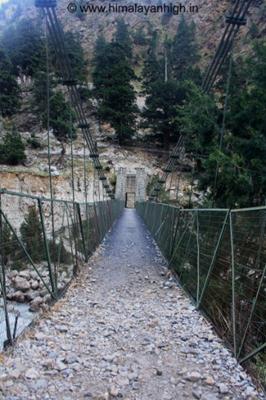
Trek starts with crossing the suspension bridge in Jumma
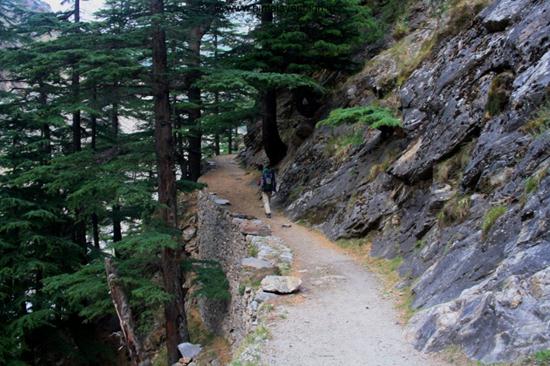
The trail leading to the village of Ruing
A beautiful, newly-built overhanging bridge marked the beginning of our second trek. After five hours of nonstop downhill trekking, it felt surprisingly good to climb uphill again. Within about 90 minutes, we reached Ruing just after sunset. We were back at around 2800 meters, and this region of Garhwal felt entirely different from Gorson’s bugyals or Khulara’s meadows.
The next day was a gentle walk to Dronagiri village—a place I’ll never forget. The people there were so warm and welcoming. They invited us in for tea, and I ended up having some memorable conversations with several locals. The village had far fewer people than houses. There were hardly any young boys or girls around—just a few kids home for the summer, and mostly middle-aged or elderly residents. We camped in the village beside a two-storey concrete building under construction. The building stood out sharply among the traditional village huts built of wood, stone, mud, and rock slate roofs. It was probably intended as a future eco-tourism resort. Whether that’s good or bad… time will tell.
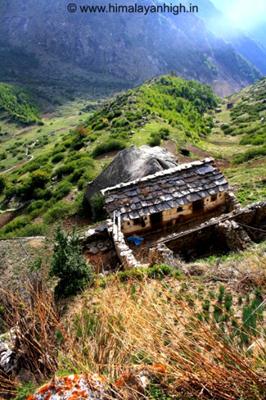
A dreamy village scene - Dronagiri Village
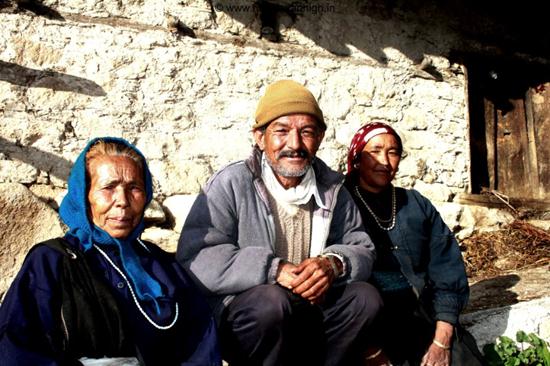
A lovely and welcoming family
An Interesting Story of the Dronagiri Village
From the villagers, I learned an interesting story connected to the Hindu epic, the Ramayana. It’s said that when Hanuman fetched the Sanjivani herb to save Lakshman, he uprooted the entire mountain behind this village. Because of that, when the villagers perform the Ram Leela (a dramatic enactment of the Ramayana) during festivals, they stop the play at the scene of Hanuman fetching the Sanjivani.
The village has only one temple, and no one except the Pandit is allowed to enter; people pray from a distance. Although a new concrete road has been built recently, our guide Kushal shared that during the five-yearly religious rituals of the Mata (Mother Goddess), the goddess refused to be carried along the new road and insisted that her carriers take the old trail to the temple instead.
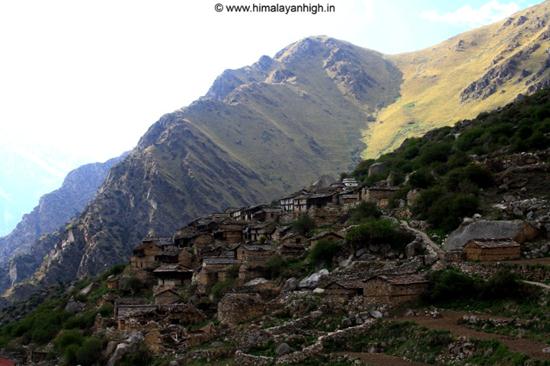
The village of Dronagiri
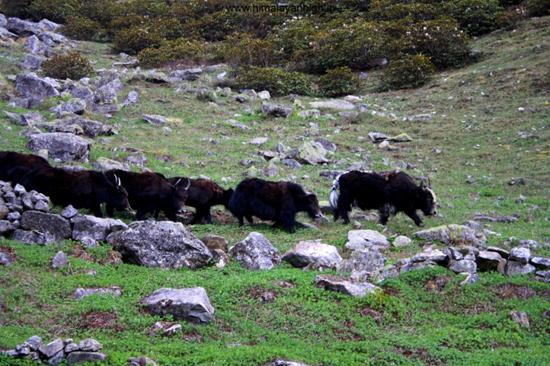
Free wild yaks roaming around the village
Baghini Glacier Exploration
Upon reaching the Upper Baghini Glacier, the sight wasn’t quite what I had imagined. It wasn’t a vast glacier but was broken with numerous crevasses. I couldn’t resist my curiosity and climbed down to get closer. In one of the cracks, I saw the Rishi Ganga flowing ferociously beneath the ice. It was a mix of fear, awe, and excitement running through my body and mind. The photos I captured there are some of my most treasured memories.
Unfortunately, we didn’t get clear weather to see all the surrounding peaks. From this spot, it’s possible to view many peaks, especially Trishuli and Trishuli West, but we only managed to glimpse Hardeol and Rishi Pahad.
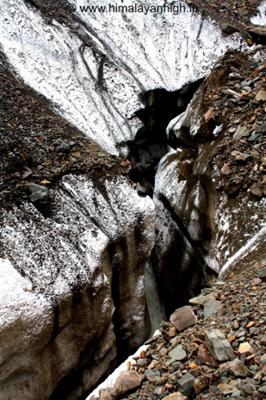
Crevasses of Baghini Glacier
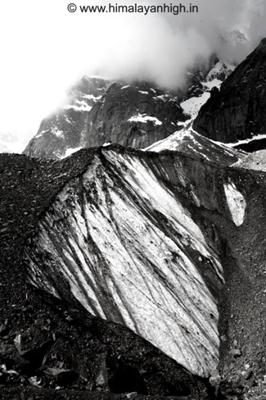
Crevasses of Baghini Glacier
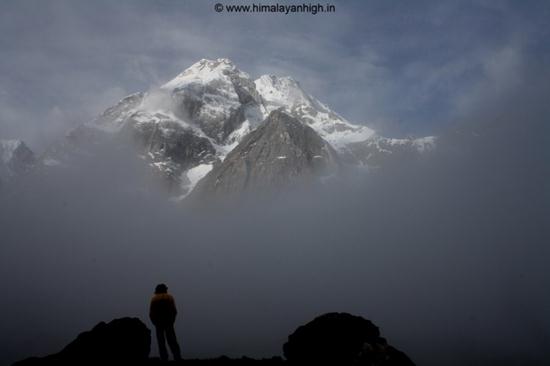
Lost in wonderland
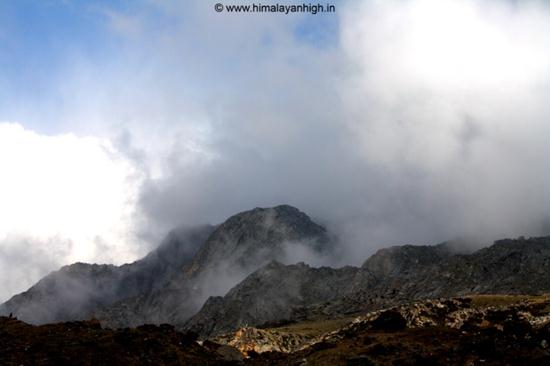
Magical plays of the elements of nature
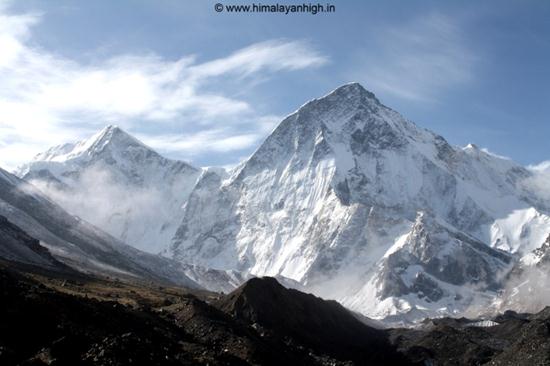
Rishi Pahad and Hardeol
A Sad Return
Frustratingly, the weather cleared just as we were starting our return journey from the glacier! It took us a little more than two hours to get back to Dronagiri village. The kind aunty welcomed us once again with tea. I gifted her my tulsi green tea bags in return and clicked some more photos of her. It felt like the closing chapter of our adventure.
That evening, some homemade starters kept our spirits high. Later, I found myself in a fascinating conversation with an elderly man, the caretaker of the under-construction building. Despite having lost one hand, he was wise and cheerful. Our topic was marriage — I argued against it, while he passionately defended it. By the end of the debate, he’d given me some solid points that weakened my stance, though I didn’t let him see that. 😊
The following day, we trekked back to Jumma, booked a Sumo from Ruing, and reached Joshimath the same day. The hospitality of the Dronagiri villagers will always stay with me — their warmth left a lasting impression on my life.
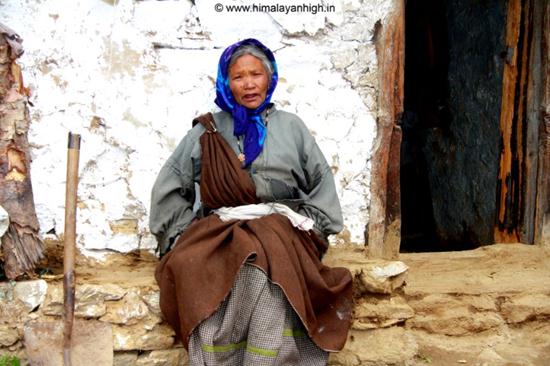
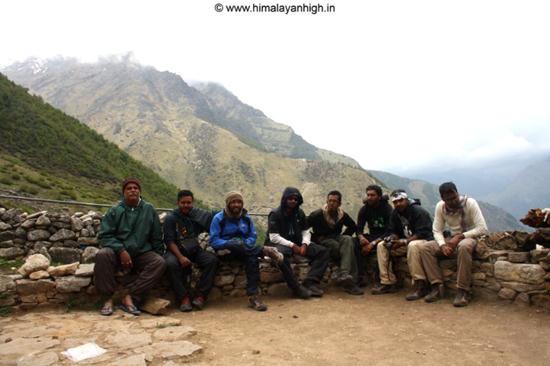
Some journeys change who you are. Some journeys make you a better person. Trekking the Himalayas is far more than a sport—it’s a special way of life.